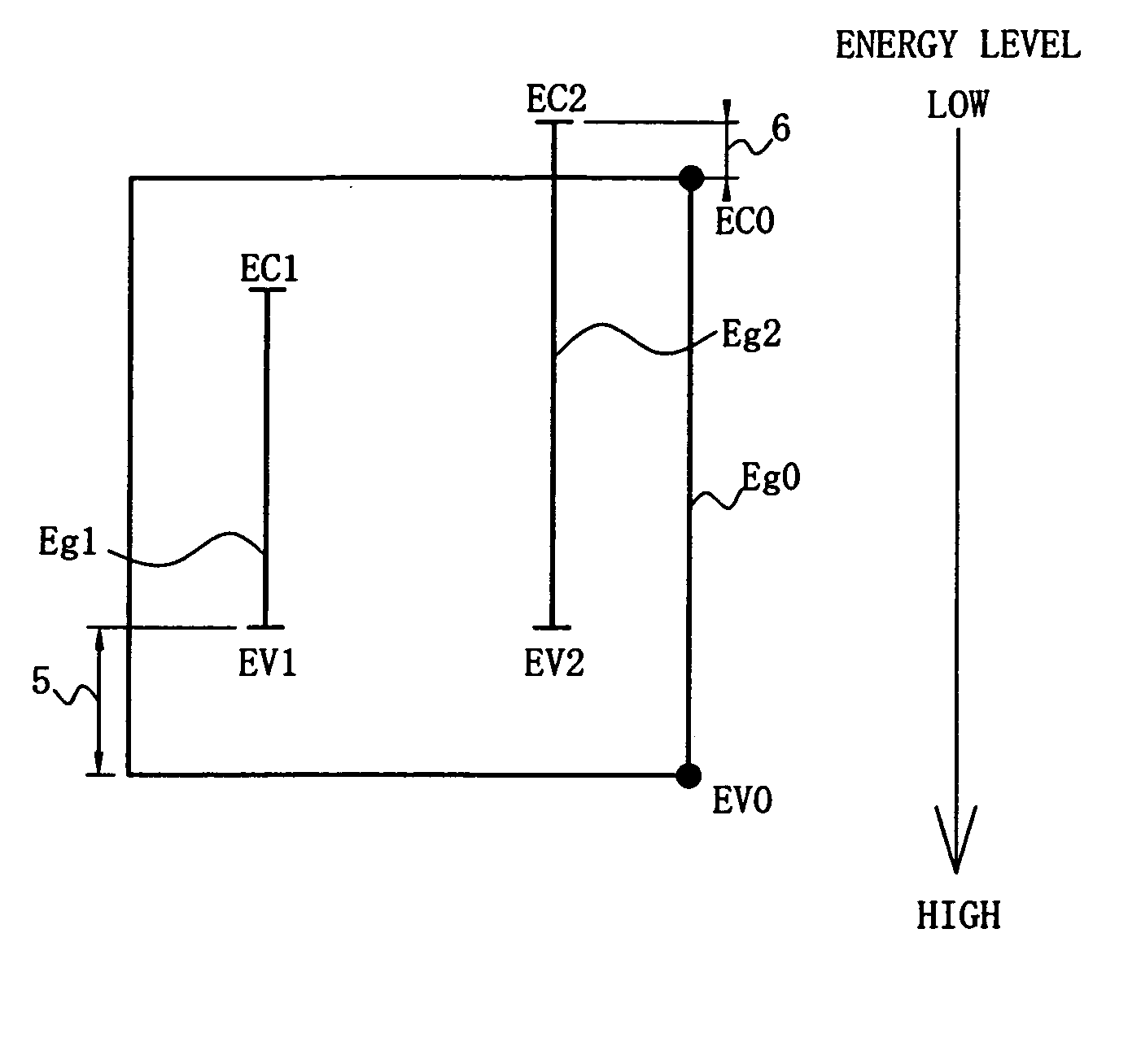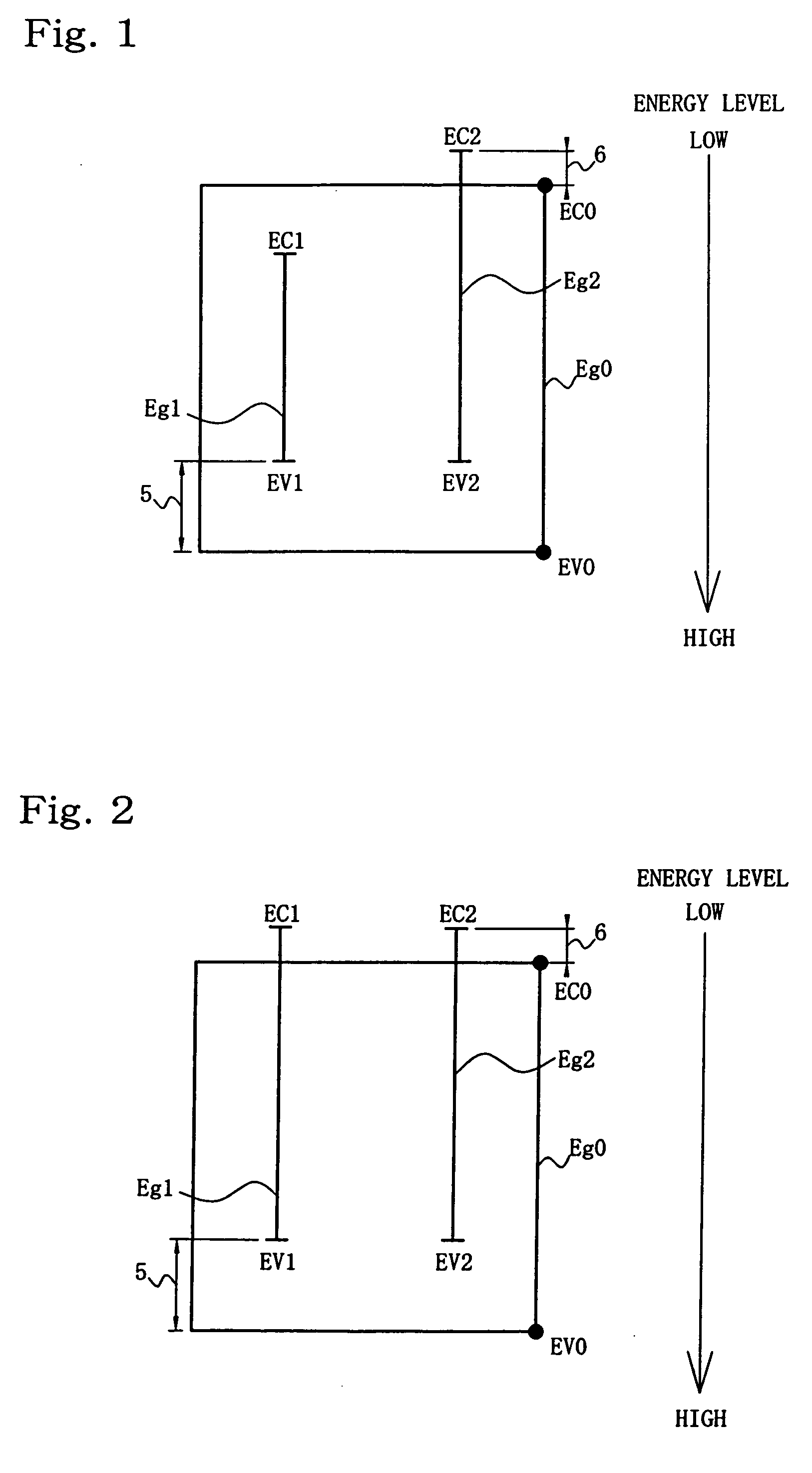Organic electroluminescence element
a technology of electroluminescence element and organic el, which is applied in the direction of luminescent compositions, organic semiconductor devices, tubes with screens, etc., can solve the problems of inconvenient long luminescent wavelengths, high driving voltage insufficient efficiency and etc., to achieve the effect of improving the durability of organic el elements
- Summary
- Abstract
- Description
- Claims
- Application Information
AI Technical Summary
Benefits of technology
Problems solved by technology
Method used
Image
Examples
example 1
[0162] A grass substrate of 25 mm by 75 mm by 1.1 mm with an ITO transparence electrode (GEOMATEC CO., LTD.) was subjected to ultrasonic cleaning with isopropyl alcohol for 5 minutes, and cleaned with ultraviolet rays and ozone for 30 minutes.
[0163] The resultant substrate was mounted on a substrate holder in a vacuum deposition device. First, a film of N,N′-bis(N,N′-diphenyl-4-aminophenyl)-N,N′-diphenyl-4,4′-diamino-1,1′-biphenyl (TPD232 film), having a film thickness of 60 nm, was formed so as to cover the surface of the transparence electrode on which transparence electrode lines were formed. The TPD232 film functions as a hole injecting layer.
[0164] After forming the TPD232 film, a layer of N,N,N′,N′-tetra(4-biphenyl)-diaminobiphenylene (TBDB layer), having a film thickness of 20 nm, was formed on the TPD232 film. The film functions as a hole transporting layer.
[0165] Thereafter H1 as a light-emitting-layer material, D1 as a first dopant and D2 as a second dopant were deposit...
example 2
[0168] An organic EL element was produced in the same way as Example 1 except that H2 was used instead of H1, and D3 was used instead of D1.
example 3
[0169] An organic EL element was produced in the same way as Example 2 except that D1 was used instead of D2.
PUM
 Login to View More
Login to View More Abstract
Description
Claims
Application Information
 Login to View More
Login to View More - R&D
- Intellectual Property
- Life Sciences
- Materials
- Tech Scout
- Unparalleled Data Quality
- Higher Quality Content
- 60% Fewer Hallucinations
Browse by: Latest US Patents, China's latest patents, Technical Efficacy Thesaurus, Application Domain, Technology Topic, Popular Technical Reports.
© 2025 PatSnap. All rights reserved.Legal|Privacy policy|Modern Slavery Act Transparency Statement|Sitemap|About US| Contact US: help@patsnap.com



